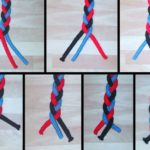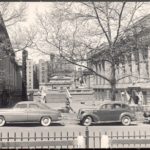
There you are, client on the witness stand, jury in the box, story being told on direct exactly the way you prepared her, things going just swimmingly.
And then opposing counsel stands and utters those two lovely words…”Objection, hearsay.”
Huh? That’s ridiculous, you confidently think to yourself, just as you hear the trial judge say, sustained!.
Diving into Evidence Code Section 1220, wearing your big boy suit and feeling like a schoolkid, all eyes upon you, searching for that magic exception, you mutter “not offered for its truth” because that one usually seems to work.
Hearsay? An out of court statement offered for its truth, with a gazillion exceptions? Isn’t that dusty rule of evidence irrelevant in the 21st century? (We’ll save a discussion of relevancy for another post).
Last month, the California Supreme Court reversed a Court of Appeal decision interpreting the hearsay rule. The case is Frank C. Hart v. Keenan Properties, Inc., Case No. S253295, reported at 2020 DJDAR 4757 (May 21, 2020).
If you try cases in a California courtroom, you need to read the Hart decision. Twice.
$1.6 Million Hanging on a Circle K
Frank Hart developed mesothelioma, and sued Keenan Properties, Inc. (Keenan) and other entities involved in the distribution and use of pipes containing asbestos on a construction project. Keenan, a wholesale distributor, sold asbestos-cement pipe between 1965 and 1983. In 1977, it changed its name to Keenan Supply. Keenan had a distinctive logo – the letter “K” drawn to resemble a straight pipe and an angled pipe, enclosed in a circle.
Foreman John Glamuzina was Hart’s supervisor for a brief period in 1977, and a critical witness. But his testimony was thin. He was familiar with asbestos-cement pipe and recalled that it was used on the project. Glamuzina explained: “[T]here would be different invoices to sign when the truckers would come up with a load.” When materials were delivered to the worksite, Glamuzina “would just check the load for my eight-inch pipe, shorts or whatever came on the pipe, that’s all I would check on that.”
He would also check the invoices to make sure the supplies listed matched what was being delivered. If the information was correct, he signed the invoice and retained a copy, which he turned in to the site office. Glamuzina remembered seeing the name “Keenan” on invoices but could not “recall exactly” how Keenan’s name was printed or how many times he saw the name on invoices.
Glamuzina testified he did not see names of any other suppliers and explained that “[w]hen you’re working out in the field, you’re in a hurry . . .” When asked why “Keenan sticks out in your mind,” he replied: “Just the way the — their K and stuff is all — I don’t know.”
Keenan moved to exclude any reference by Glamuzina to Keenan invoices, arguing that any reference to “Keenan” on the invoices constituted inadmissible hearsay.
The trial court rejected Keenan’s hearsay argument, giving two reasons. First it held the evidence was not hearsay but merely circumstantial evidence of identity.
Second, even if hearsay, the evidence fell under an exception as the statement of a party opponent. Glamuzina’s testimony was admitted as to the name and logo he saw printed on the invoices given to him when pipes were delivered. Keenan did not request a limiting instruction on the permissible consideration of Glamuzina’s testimony.
The jury returned a plaintiff’s verdict, with a special finding that Hart was exposed to asbestos from pipe supplied by Keenan. A judgment of $1,626,517.82 was entered against Keenan.
The Court of Appeal reversed in a split opinion (also worth reading), concluding Glamuzina’s descriptions of the invoices were hearsay. Hart v. Keenan Properties, Inc. (2018) 29 Cal.App.5th 203, 213.
The California Supreme Court applied a different analysis and reversed the Court of Appeal.
The California Supreme Court and the “Not-for-the-Truth Limitation”
Everyone still reading this realizes the deceptively simple hearsay rule is exactly that, deceptively simple.
One of many reasons is the “not-for-the-truth-limitation” – when evidence that certain words were spoken or written is admitted to prove that the words were uttered or written, and not to prove their truth, the evidence is not hearsay.
As explained by the unanimous California Supreme Court in Hart, suppose A hit B after B said, “You’re stupid.” B’s out-of-court statement asserts that A is stupid. If those words are offered to prove that A is, indeed, stupid, they constitute hearsay and would be inadmissible unless they fell under a hearsay exception.
However, those same words might be admissible for a non-hearsay purpose: to prove that A had a motive to assault B. The distinction turns not on the words themselves, but what they are offered to prove.
The concept can prove analytically elusive when the words themselves also make an assertion.
The shorthand way to make sense of the “not-for-the-truth limitation” is to ask why the out-of-court statement is being offered. If the statement is offered for some purpose independent of the truth of the matters it asserts, and capable of serving its non-hearsay purpose regardless of whether the jury believes the matters asserted to be true, then it fits the “not-for-the-truth limitation” and is admissible.
As a safeguard, when this kind of non-hearsay evidence is admitted, the jury is not allowed to consider the truth of any substantive assertion, and is often instructed to that effect.
So let’s review.
- The trial court said non-hearsay.
- Two Appellate Court justices disagreed, with a third dissenting.
- The California Supreme Court reversed the appellate court and unanimously agreed with the trial court, finding Glamuzina’s observations were circumstantial evidence of Keenan’s identity as the source of the pipes.
See how simple this is?
The Takeaway
Hearsay is complex, and as we can see often misunderstood, despite the fact the modern concept of hearsay dates back to the early 1800’s.
But hearsay is obviously alive and well. So be prepared for the hearsay objection and have a short “pocket brief” ready. Mine are sometimes just handwritten notes on the back of draft paper stuffed into the witness file.
Whatever form your trial notebook takes, think about this simple rule of evidence when you are getting ready for trial, and be ready to smack the hearsay objection back with a Circle K pipe.
More
Cathy here: this post is republished here with permission from Wayne’s new website WayneSilverLaw.com. You can read more on bankruptcy and litigation there. Start with his take on the 9th Circuit in Wall Design and the bankruptcy trustee’s avoiding powers.







